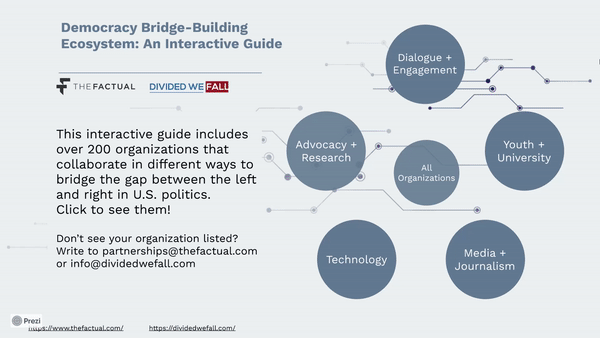Regular readers of The Factual’s daily newsletter may have noticed that left-leaning sources are ranked as the top-rated article on a topic more often than right-leaning sources. Does this suggest The Factual has a left-leaning bias?
While we’ve explored this issue twice before, this post explains why this pattern happens and how The Factual’s ratings and curation system delivers unbiased news. The Factual algorithm automatically rates individual articles based on four factors:
- Extent of sources
- Level of opinionatedness
- Author’s topical expertise
- Site reputation
Essentially, if an author writes consistently on a topic, and each time has extensive sources and maintains a neutral tone, they’ll start to rank highly. And as more authors on a particular site rank highly the site’s reputation score goes up.
Notice that the above factors do not take into consideration how popular a site or article is. There are no likes, retweets, or backlinks. This avoids favoring the best known, or largest, news sources. Also, a news source’s political leaning has no relevance on the grade calculation.
Unlike most machine learning models, when we built The Factual’s rating algorithm, we did not train the model with a list of articles or sites we felt were credible. That would just teach the system what we liked, which would favor our biases.
Please check your email for instructions to ensure that the newsletter arrives in your inbox tomorrow.
Instead, the four factors are measurable independent of any other external inputs. Indeed, readers of The Factual have often remarked how a wide range of sources rank highly – which is precisely due to the design of the ratings system.
So why are left-leaning sites featured more often? There are three main reasons.
- There are far more moderate-left leaning news sources than moderate-right leaning sources. Hence, simply due to volume of articles, moderate-left leaning sources show up more often.
- Left and right-leaning sites are, on average, more opinionated than their moderate counterparts. This lowers their rating compared with sites that are more moderate.
- Moderate-left sites are often general news sources while right-leaning sources often feature primarily political news. Political news is often more opinionated than articles on science or health, which means that moderate-left sites have higher historical average scores because of a greater diversity of content.

An analysis of Factual Grade across 10,000 political articles
All that said, the advantage of The Factual rating individual articles, rather than sites, is that even sites which are normally one-sided in their framing can score well if they present a cogent argument with minimal opinions, extensive sources, and are written by authors who focus deeply on an issue. That helps readers see a wide range of credible viewpoints on a topic so they can get the full story.
Lastly, The Factual’s grades for each article are transparently presented so that readers can understand why they are seeing a particular article. This allows people to offer constructive criticism so we improve our algorithm and rate more effectively. Indeed, if you ever feel an article was rated inaccurately, please let us know (just reply to our newsletter).



